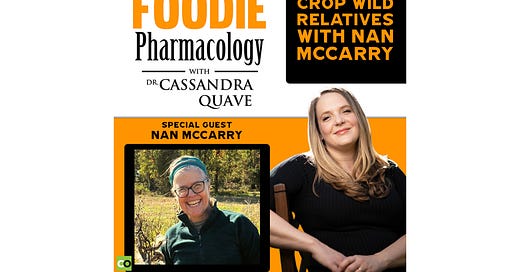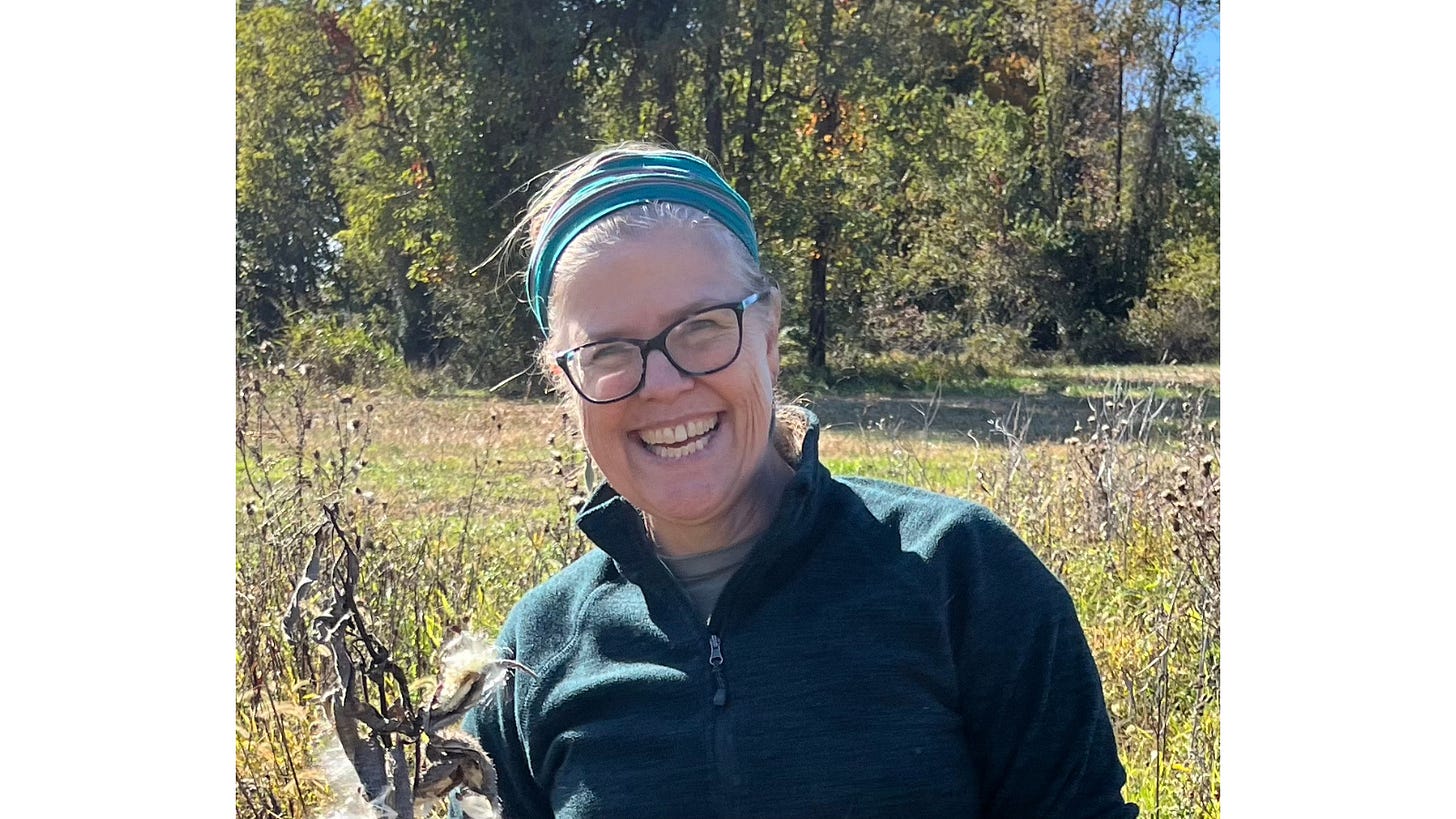🎧 Crop Wild Relatives with Nan McCarry
Crop wild relatives are the unsung heroes of our food system, holding the key to the resilience, diversity, and sustainability of our crops. Tune in to learn more!

Crop wild relatives are the wild plants that are genetically related to our cultivated crops. They act as a treasure trove of genetic diversity that breeders rely on to improve crops and make them more resilient to climate change, pests, and diseases. This week on the show, Dr. Quave speaks with Nan McCarry, ethnobotanist and crop wild relative enthusiast! They discuss the subtle relationship between food security and biodiversity, underscoring the need to conserve these wild relatives. Nan elaborates on her experiences collecting land races of potatoes in the Andes and sheds light on how these plants offer resilience to agricultural systems and help safeguard our food future.
Access a summary of this Foodie Pharmacology episode at the bottom of this post. This special feature is available to paid subscribers of the Nature’s Pharmacy newsletter.
About Nan
Nan is an ethnobotanist specializing in the history of crop plants and their wild relatives. Nan's fascination with agriculture began during her upbringing on a working farm in Virginia. These early experiences eventually became the guiding force behind her graduate studies in geography at the University of Texas, leading her to do research for her thesis on traditional home gardens in Ciudad Vieja, Guatemala.
In the following years, Nan balanced family life with further coursework in botany and genetics and working with local conservation nonprofits. At a volunteer in the Herbarium at the Smithsonian, she prepared herbarium samples for studies in phylogenetics (unraveling where species fall on the evolutionary tree).
Recently, with NatureServe, Nan played a key role in organizing a workshop at Oak Spring Garden in Virginia on the conservation of the native grapes of North America. Nan also works at Watermark Woods Native Plants in Hamilton, VA, where she is launching a project to educate clients on crop wild relatives. At home, she is hard at work converting three acres to a native food forest, learning as she goes.
Nan is a member of the Virginia Native Plant Society and the Society for Ethnobotany.
Listen to the interview
Listen to the podcast on any of your favorite podcast streaming services. Subscribe to Foodie Pharmacology to access new episodes weekly! If you enjoy this and other episodes, let me know! Give is a 5-star rating on Apple Podcasts so others can find it and enjoy!
Watch the video
Available exclusively on the Teach Ethnobotany YouTube Channel, you can catch the full video version of this episode and others! Enjoy!
Yours in health, Dr. Quave
Here is the episode summary, available to Nature’s Pharmacy paid subscribers:
Our guest this week, Nan McCarey, is an ethnobotanist and expert in the history of crop plants and their wild relatives. She sheds light on the critical role these wild plants play in ensuring food security and agricultural resilience.
The Significance of Crop Wild Relatives
Crop wild relatives are the wild plants that are genetically related to our cultivated crops. They act as a treasure trove of genetic diversity that breeders rely on to improve crops and make them more resilient to climate change, pests, and diseases. Nan emphasizes the importance of crop wild relatives in maintaining food security and sustainability in the face of ever-evolving challenges.
Challenges to Existing Crops
Nan points out that throughout history, crops have always faced challenges, but the modern industrial food system and monoculture practices have amplified these challenges. Pests, diseases, climate change, and other environmental factors can devastate entire crops if they lack genetic diversity. She highlights the infamous Irish potato famine and the current crisis facing bananas as examples of what can happen when crops lack diversity and fall victim to a specific pathogen or pest.
Preserving Crop Wild Relatives
To combat the threats facing our crops, it is crucial to preserve and utilize crop wild relatives. Nan shares stories of her work in documenting and collecting crop wild relatives, such as her expedition to study land races of potatoes in the Andes. She emphasizes the cultural significance of these plants and the pride local farmers have in maintaining their diversity over generations.
Call to Action: Increasing Awareness and Resilience
Nan and Dr. Quave discuss the importance of community education and getting the public excited about crop diversity. They suggest focusing on native plants and raising awareness about the connection between biodiversity and the resilience of our food system. Gardening enthusiasts can contribute to maintaining crop wild relatives by incorporating them into their own gardens and supporting local conservation efforts. Increasing public awareness and appreciation for the diversity of crops and their wild relatives is crucial in ensuring a sustainable and resilient future for agriculture.
Conclusion
Crop wild relatives are the unsung heroes of our food system, holding the key to the resilience, diversity, and sustainability of our crops. By incorporating crop wild relatives into our gardens, supporting local conservation efforts, and spreading awareness about their importance, we can contribute to a more resilient and sustainable food system. Let’s celebrate the diversity of our crops and recognize the vital role played by their wild relatives!





